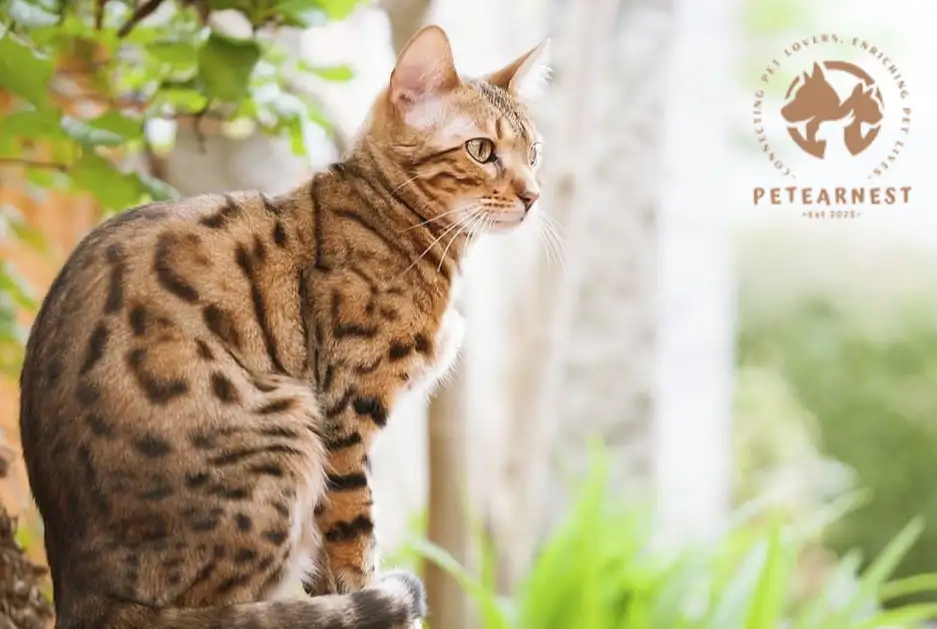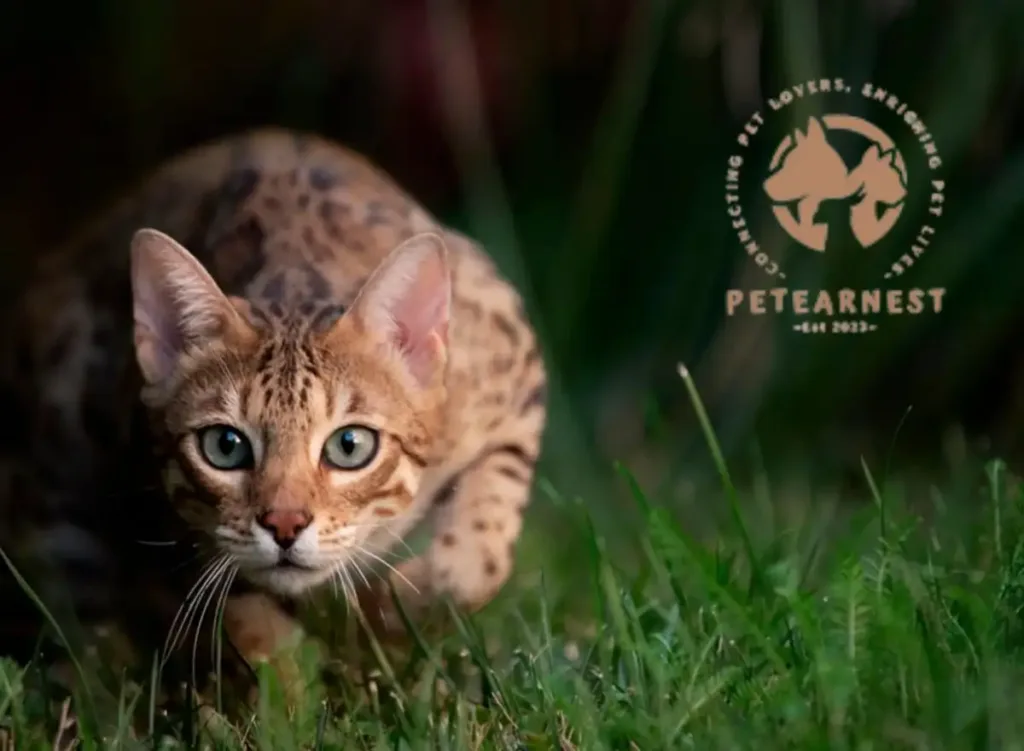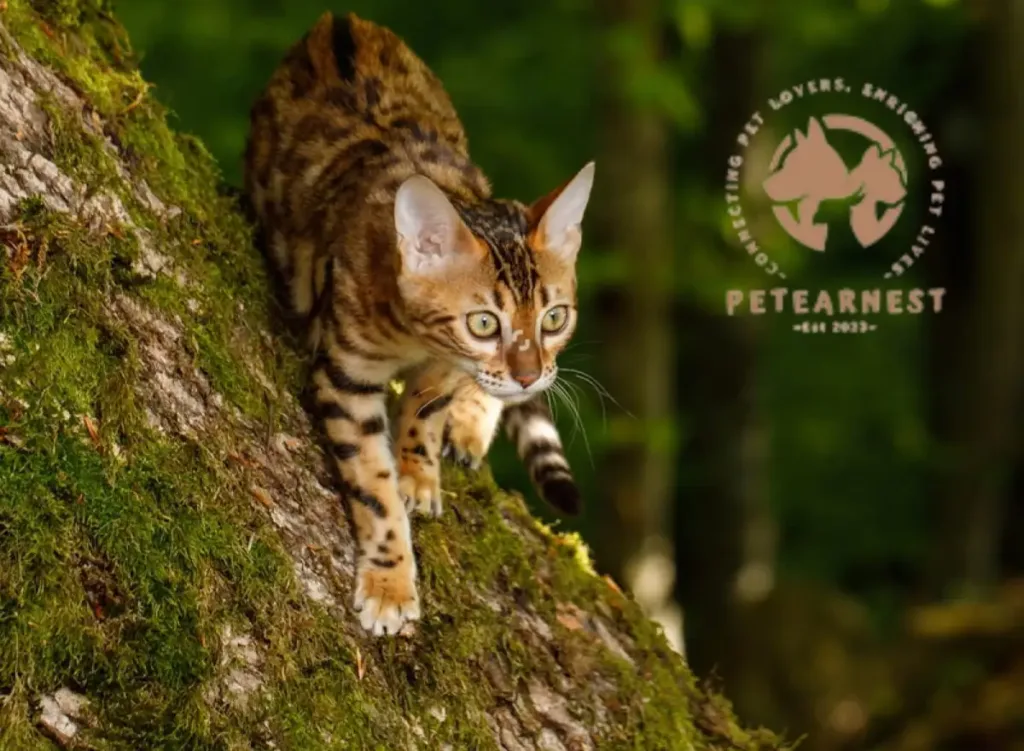The Bengal cat is a wild beauty that is known for its energetic and playful nature. With its striking markings and vibrant personality, the Bengal cat is a popular choice among cat lovers who are looking for an active and engaging companion. This feline breed is known for its intelligence, affectionate nature, and majestic beauty. Whether you’re a seasoned cat owner or a first-time pet parent, the Bengal cat is sure to bring excitement, joy, and love into your life. In this article, we’ll take a closer look at the Bengal cat and everything that makes this breed such a unique and special companion.
“Unleash the Adventurer in Your Home: Get to Know the Bengal Cat”

Looking for a feline companion with boundless energy and playfulness? Look no further than the Bengal cat. With their striking markings and athletic build, Bengal cats are the perfect addition to an active household. Learn all about this exciting breed and discover if the Bengal cat is the right fit for you and your family.
Appearance
Bengal cats are a breed of domestic cat known for their distinctive physical appearance. They have a distinctive wild look, with a short and soft fur that is covered in striking patterns of spots or marbling. The fur color can range from brown to golden, sometimes with black markings. Bengal cats have large, expressive eyes that are often green or blue in color. They have a muscular and athletic build, with a lean body, long legs, and a distinctive, medium-sized tail. Bengal cats are known for their energetic and playful personalities, and their love for climbing, jumping, and playing with toys.
Here are 10 interesting facts about Bengal cats:
-
- Bengal cats are a hybrid breed, created by breeding an Asian leopard cat with a domestic cat.
-
- Bengal cats are known for their unique, wild appearance and have a distinctive coat pattern that can range from spots to marbling.
-
- Bengal cats are highly active and energetic, and love to play and climb. They are known for their athletic ability and agility.
-
- Bengal cats are intelligent and inquisitive, and can be easily trained to perform tricks and follow commands.
-
- Bengal cats are social animals and love to be around people and other pets.
-
- Bengal cats are known for their vocal nature and love to communicate with their owners.
-
- Bengal cats require regular grooming to keep their fur in good condition and to remove any loose hair.
-
- Bengal cats are generally healthy and have a lifespan of around 12-16 years.
-
- Bengal cats are a popular breed and have been recognized by the International Cat Association (TICA) since 1983.
-
- Bengal cats are highly adaptable and can thrive in a variety of environments, from apartment living to large homes with plenty of outdoor space
Personality
Bengal cats are known for their energetic and playful personalities, making them an ideal choice for families with children, and those who enjoy an interactive and active pet. They are highly intelligent and enjoy playing with toys and exploring their surroundings. They are also affectionate and enjoy human interaction, making them a great choice for those who want a pet that will keep them active and entertained.

Despite their playful nature, Bengal cats are also independent and enjoy spending time alone, as well as with their owners. They are highly curious, and can sometimes be mischievous, so it is important to keep an eye on them to ensure their safety.
Bengal Cat Behavioral Tips
Bengal cats are intelligent, energetic, and playful, which can make them great pets, but also requires consistent training and positive reinforcement.
Here are 5 tips for managing common behavioral issues in Bengal cats:
-
- Scratching: Bengal cats have strong scratching instincts, so provide plenty of scratching posts and other scratch-friendly items to help redirect this behavior.
-
- Destructive behavior: Bengal cats can become bored and destructive if they do not have enough opportunities for play and mental stimulation. Provide plenty of interactive toys and spend time playing with your cat each day.
-
- Aggression: Bengal cats can become aggressive if they feel threatened or if their boundaries are not clearly established. Use positive reinforcement training and consistent consequences to discourage aggressive behavior.
-
- Housetraining: Bengal cats can be trained to use a litter box, but they may need patience and consistency. Keep the litter box clean and accessible, and provide positive reinforcement when your cat uses it correctly.
-
- Separation anxiety: Bengal cats can develop separation anxiety if they become overly attached to their owners. Gradually increasing the time you spend away from home and providing plenty of mental stimulation can help reduce separation anxiety.
Remember, every Bengal cat is unique and may have different behavioral needs, so it’s important to understand your cat’s specific behavior patterns and provide training and support as needed.
Care and Grooming
Bengal cats have a short and easy-to-maintain coat, but they do require plenty of opportunities for exercise and play to keep them healthy and active. It is also important to provide them with plenty of interactive toys and activities to keep them entertained and engaged. Bengal cats do not require a lot of grooming, but it is important to brush their fur occasionally to remove any loose hairs.
Here are some guidelines for providing a balanced diet and nutrition for Bengal cats:
-
- Protein: Bengal cats are energetic and active, so they require a diet high in animal-based protein to support their muscles and overall health. Look for a portion of high-quality commercial cat food that lists a protein source, such as chicken or fish, as the first ingredient.
-
- Fat: Fat is an important energy source for Bengal cats, but it should be included in moderation. Look for a food that lists a healthy fat source, such as chicken fat or fish oil, as one of the first few ingredients.
-
- Carbohydrates: While Bengal cats do not require a high carbohydrate diet, some carbohydrates can provide a source of energy and help balance the diet. Look for a food that includes carbohydrates from sources such as rice or potatoes.
-
- Vitamins and minerals: A balanced diet should provide the necessary vitamins and minerals to support overall health, including Vitamin A, Vitamin D, and calcium.
-
- Hydration: Bengal cats require access to clean water at all times, as they do not get enough hydration from their food alone. Provide multiple water bowls in different areas of the home and consider switching to a wet food diet, which can provide additional hydration.
It’s important to remember that every Bengal cat is unique and may have different nutritional needs, so be sure to consult with a veterinarian to determine the best diet for your cat.

Bengal cats are highly active and energetic, so it’s important to provide them with plenty of opportunities for exercise and play.
Here are a few tips to help keep your Bengal cat healthy and happy:
-
- Interactive toys: Invest in interactive toys that challenge your Bengal cat’s hunting instincts, such as feather wands, balls with bells, and puzzle feeders.
-
- Scratching posts: Provide scratching posts and other scratch-friendly items, such as cardboard boxes and sisal rope, to help your Bengal cat satisfy their natural scratching behaviors.
-
- Playtime: Set aside time each day for playtime with your Bengal cat. This can be a great opportunity to bond with your pet while providing them with much-needed exercise.
-
- Climbing and jumping: Bengal cats are natural climbers and jumpers, so provide opportunities for them to climb and jump, such as cat trees and window perches.
-
- Outdoor exploration: While Bengal cats are not typically outdoor cats, they may enjoy supervised outdoor exploration in a secure, enclosed area.
Remember, exercise and play are important for maintaining your Bengal cat’s physical and mental well-being, so be sure to provide plenty of opportunities for physical activity and play each day.
Health
Bengal cats are generally healthy and robust, but they can be prone to certain health issues, such as skin problems, eye problems, and obesity. Regular check-ups with a veterinarian and a healthy diet can help to prevent these issues and ensure that your Bengal cat stays healthy and happy throughout its life.
Here are 4 issues to watch out for when keeping Bengal cats healthy:
-
- Obesity: Bengal cats are known for their high energy levels, but they also have a tendency to overeat if given the opportunity. Regular exercise and portion control can help keep Bengal cats at a healthy weight.
-
- Urinary tract issues: Bengal cats are prone to urinary tract issues, such as blockages and crystals, which can be painful and potentially life-threatening. Feeding a high-quality diet and making sure that your Bengal cat has access to clean water can help prevent these issues.
-
- Skin allergies: Bengal cats can be prone to skin allergies, which can cause itching, redness, and hair loss. Keeping the environment clean and free of allergens, and consulting with a veterinarian if any symptoms arise, can help prevent skin allergies.
-
- Hypertrophic cardiomyopathy: Bengal cats are predisposed to developing a heart condition known as hypertrophic cardiomyopathy. Regular veterinary check-ups and monitoring for signs of heart problems can help detect this condition early and improve your cat’s chances of a successful outcome.
It is important to remember that Bengal cats, like all cats, have unique health needs and requirements. Regular veterinary check-ups and a balanced diet can help keep your Bengal cat healthy and happy.




4 comments
Bengal Cat
[…] Bengal Cat: Unleash the Energy of the Ultimate Playful and Energetic Companion […]
[…] If you’re interested in learning more about the history and traits of the Bengal Cat, check out our detailed article on this brilliant breed. Click here […]
[…] Bengal Cat: Unleash the Energy of the Ultimate Playful and Energetic Companion […]